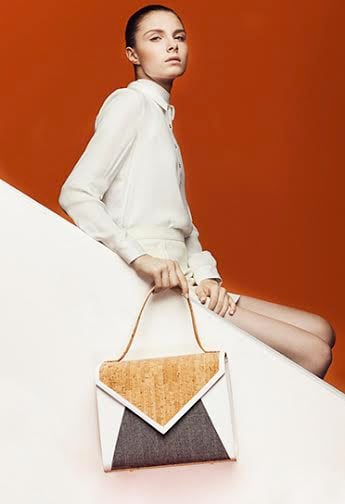A.I. Artisanal Intelligence – In-Existent

In un momento di ridefinizione dell’espressione culturale ma anche sociale ed economica della nostra storia, A.I. Artisanal Intelligence indaga la smaterializzazione e la reinvenzione, l’immateriale e l’inconsistente materializzato, per cercare tracce e nuovi segni con l’aiuto del preesistente.
Comunicato stampa
Due luoghi simbolici di Roma, una volta parte dello stesso insediamento e ora divisi per evoluzione urbanistica: la Villa Poniatowski restaurata nel ‘700 dal Valadier e un'associazione culturale per l’arte contemporanea negli spazi che un tempo erano scuderia della villa stessa. In un momento di ridefinizione dell’espressione culturale ma anche sociale ed economica della nostra storia, A.I. Artisanal Intelligence indaga la smaterializzazione e la reinvenzione, l’immateriale e l’inconsistente materializzato, per cercare tracce e nuovi segni con l’aiuto del preesistente. Ecco perché l’allestimento dei giovani designer si colloca nella Villa antica, accompagnato dai costumi bianchi di Capucci per la Norma e le strutture che sorreggono l’abito storico crinoline o panier, biancheria autentica e abiti talari del 700 della Sartoria Farani, i costumi di Bussotti della Sartoria Annamode: per mostrare il rapporto fra il nuovo e i fantasmi artisticamente colti del passato. Dentro AlbumArte, spazio indipendente per l’arte contemporanea, l’heritage famoso in tutto il mondo di Albertina con i suoi abiti in maglia talmente belli da essere parte dell’archivio del MET e gli abiti del un giovane couturier Gianluca Saitto, tra cui quelli per Patty Pravo che compare anche in un video del 1968 insieme a Piero Gherardi, il costumista di Federico Fellini.
La Moda quindi come fenomeno apparentemente effimero e inesistente, espressa da giovani designer con una ricerca su quello che sembra non voler esistere più come prima: la lana non è più lana, il tessuto non è riconoscibile e il carbonio diventa materia prima per la moda.
Il nuovo è rappresentato da:
- i gioielli, dai diamanti uniti al carbonio di Dome, alle forme arcaiche e dark di Voodoo Jewels e le geometrie pulite di Design Digest
- le borse di Tania Marta Pezzuolo per il brand Monteneri che usa la fibra di carbonio con pelle di vitello conciato al vegetale per costruire forme plastiche futuribili, le geometrie pulite e decise di Bistrusso ispirate ai temi della natura della Sardegna coraggiosamente attuali con la sperimentazione del sughero e il gusto contemporaneo di Sara Valente con i suoi plissé e i rilievi di pelle che generano eleganza e sensualità, inserendosi nel morbido movimento dei pellami pregiati dove angoli e curve ne completano il design
- le calze di 77 denari per Sensumlab caratterizzate da una stampa serigrafica artigianale e passate al telaio con disegni ispirati alle geometrie della natura.
- gli abiti di Florentina Isac portatori di una profonda analisi sentimentale di due mondi come l’austerità dell’Unione Sovietica e il decorativismo moldavo, la ricerca grafica della maglieria di Elise Perrotta che usa la lana come materia artistica giocando su toni e volumi, Maria Cristina Cerulli sul tema dell’out of focus e del focus e la fusione di materiali e concetti opposti in cerca di un nuovo equilibrio, Hyun Oh che, attraverso una ricerca in maglieria, ritrae il suo modo di intendere una relazione, MAD.E di Ginevra Odescalchi in collaborazione con Elica Sartogo per SO, una capsule dalle linee pulite con le stampe ispirate al guscio delle conchiglie Conus dai toni caldi animalier presentata con le maschere della sartoria teatrale Slow Costume della costumista Giovanna Buzzi.
Un progetto che trova nella moda il pretesto per vivere turisticamente e culturalmente la città.
Two symbolic places in Rome, formerly part of the same settlement, now separated as a result of urban development: Villa Poniatowski restored in the 18th century by Valadier and a cultural association for contemporary art carved out of the spaces that were once the stables of the villa itself. During these times of cultural, but also social and economic, redefinition, A.I. Artisanal Intelligence explores dematerialization and re-invention, the intangible and the insubstantial materialized, to search for traces and new signs aided by pre-existing artifacts. This explains why the works by the young designers are hosted in this old Villa, alongside Capucci’s white costumes for Norma and the structures used to support the historic crinoline dress or ‘panier’, authentic underwear and 18th century cassocks designed by Sartoria Farani as well as costumes by Bussotti of Sartoria Annamode: to demonstrate the relationship between the new and the artistically enlightened ghosts of the past. On display at AlbumArte, an indipendent space for contemporay art, a heritage collection by Albertina, famed throughout the world for her knitwear which was so beautiful that, in the 1980s, twelve examples of her work became part of the Permanent Collection of the Metropolitan Museum of Art in New York and the dresses by young couturier Gianluca Saitto, including those designed for Patty Pravo who also appeared in a video in 1968 with Piero Gherardi, Federico Fellini’s costume maker.
Hence fashion as an apparently ephemeral, non-existent phenomenon, expressed by young designers who have conducted research on what appears to no longer exist as it did before: wool is no longer wool, fabric is unrecognizable and carbon has become a raw material for fashion.
Innovation is represented by:
- jewelry, from Dome’s diamonds combined with carbon, to the dark, archaic shapes of Voodoo Jewels and the clean-cut geometries by Design Digest
- bags by Tania Marta Pezzuolo for the Monteneri brand which uses carbon fiber paired with vegetable tanned calfskin to construct futuristic plastic shapes, the clean-cut, precise geometries by Bistrusso inspired by the courageously contemporary themes of Sardinian landscapes with the experimentation of cork and the contemporary style of Sara Valente whose bas-relief and plissè detailing on leather create a sense of elegance and sensuality, blending smoothly with the soft movements of precious skins, with angles and curves completing the design.
- the 77 denari hosiery collection by Sensumlab distinguished by artisanal silk screen printing and hand-woven designs inspired by the geometries of nature.
- the dresses by Florentina Isac, messengers of a profound sentimental analysis of two worlds, namely the austerity of the Soviet Union and Moldavian decorative aspects, the graphic research conducted on knitwear by Elise Perrotta who uses wool as an artistic material by playing with textures and volumes, Maria Cristina Cerulli on the theme of out of focus and focus and the fusion of opposing concepts in search of a new balance, Hyun Oh who, through research on knitwear portrays his way of interpreting a relationship, MAD.E by Ginevra Odescalchi in collaboration with Elica Sartogo for SO, a capsule of clean-cut lines featuring prints inspired by hollowed-out Conus shells boasting warm animalier shades presented alongside the theatrical masks of Slow Costume created by costume maker Giovanna Buzzi.
A project that uses fashion as a pretext to experience the city from a cultural, ‘touristy’ perspective.



